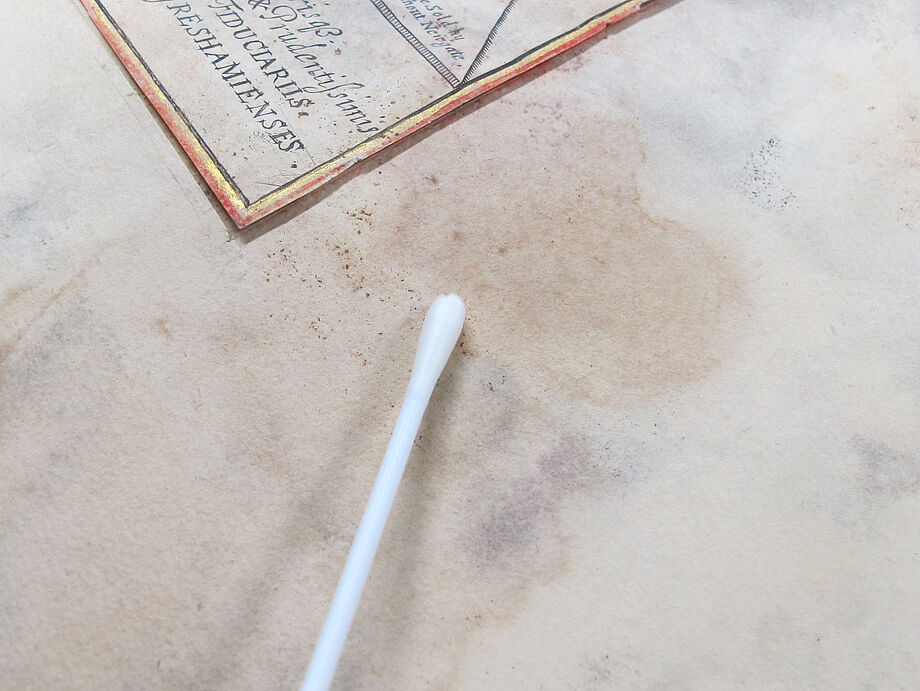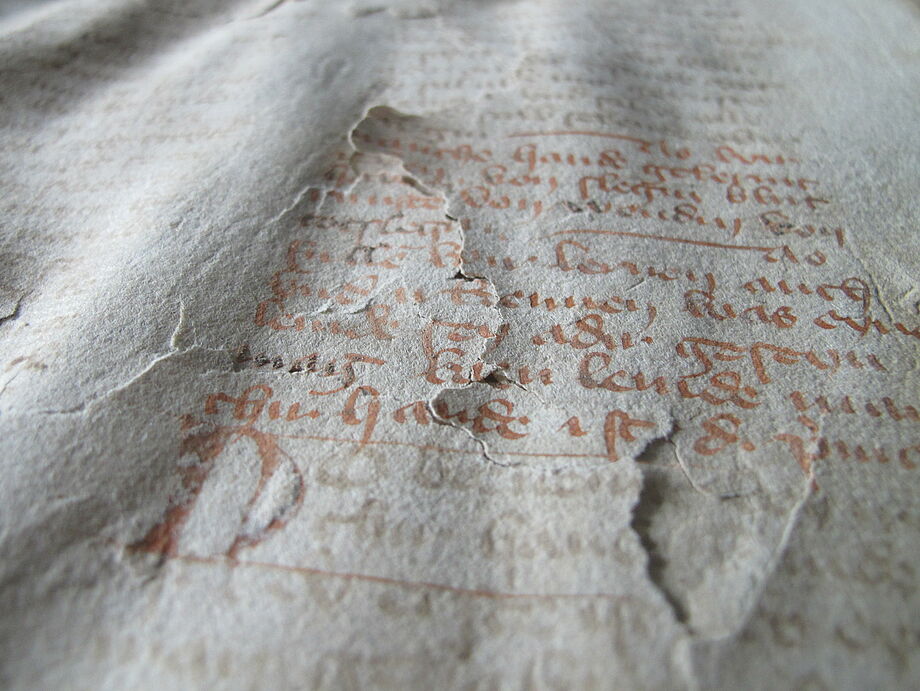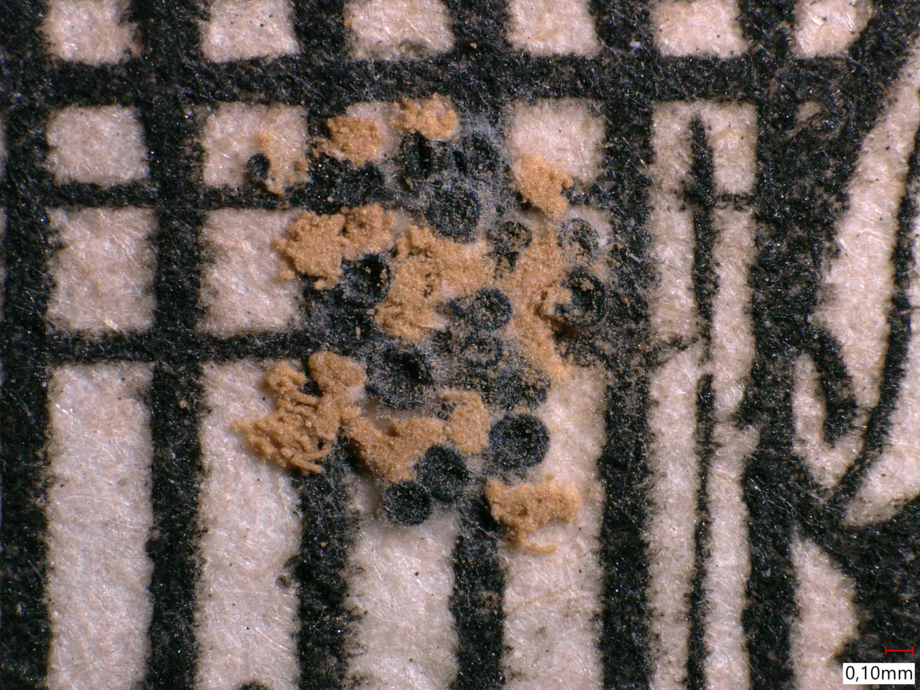Development of a novel decontamination method
In 2021, the Conservation Department of the Saxon State Library - Dresden State and University Library launched an innovative DBU-funded project entitled "Development of a novel enzymatically-based decontamination of heavily microbially damaged written material using the example of historically valuable manuscripts and printed works" in collaboration with the Institute of Wood Technology Dresden, the Fraunhofer Institute for Silicate Research and the Centre for Book Conservation.
Objective and reason for the project
The ongoing climate change poses new challenges for the protection of cultural heritage, which are also noticeable in the conservation and restoration of objects. In addition to fire damage, water and moisture damage are serious problems for written materials. Serious mould damage can also develop as a result of persistently unfavourable or briefly extreme room climates, which in quantity can lead to complex damage patterns. Such damage has already occurred in the past and not only endangers cultural property, but is a health hazard for all persons in cultural institutions. With the current state of research, there is no treatment method that causes a pollutant-free, object-friendly killing and deeply effective removal of mould components on paper objects. The aim of the project is therefore to develop a new, practical and environmentally friendly method for dissolving and removing mould in order to be able to restore and preserve such objects and to have suitable methods ready for use for similar damage events in the future.

Presentation of the work steps and the methods used
In this project, a team of researchers and restorers will analyse the complex damage caused by mould infestation on paper objects and characterise mould species as well as their organic components and their principles of action. In parallel, suitable enzymes or enzyme mixtures will be identified that can dissolve these moulds and their components while protecting the paper and writing materials. For the application of the enzymes, an aqueous method as a conservation quantity method and a low-moisture application method for restorative use on small and very small surfaces are to be developed and tested. Test bodies made of defined papers and inoculated will be available for these investigations. Only when moulds can be successfully dissolved and removed from the test bodies and the methods used have repeatedly and reproducibly led to success are tests on mould-contaminated originals planned. The new procedures for enzyme application should ultimately be transferred responsibly into restoration practice.
Project partner
- Institut für Holztechnologie Dresden gemeinnützige GmbH (IHD) Dipl.-Biol. Katharina Plaschkies | Zellescher Weg 24, 01217 Dresden
- Fraunhofer Institute for Silicate Research (ISC) Dr Gerhard Schottner | Neunerplatz 2, 97082 Würzburg
- Zentrum für Bucherhaltung GmbH (ZFB) Dr Manfred Anders | Bücherstraße 1, 04347 Leipzig Project duration 2 years (start: 01.05.2021)


